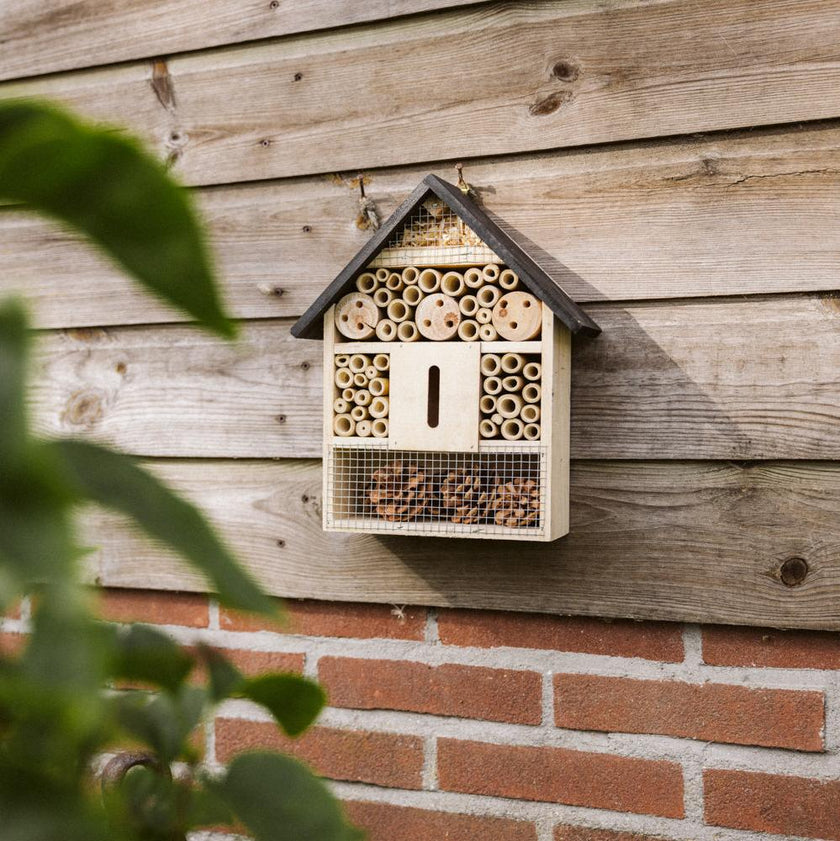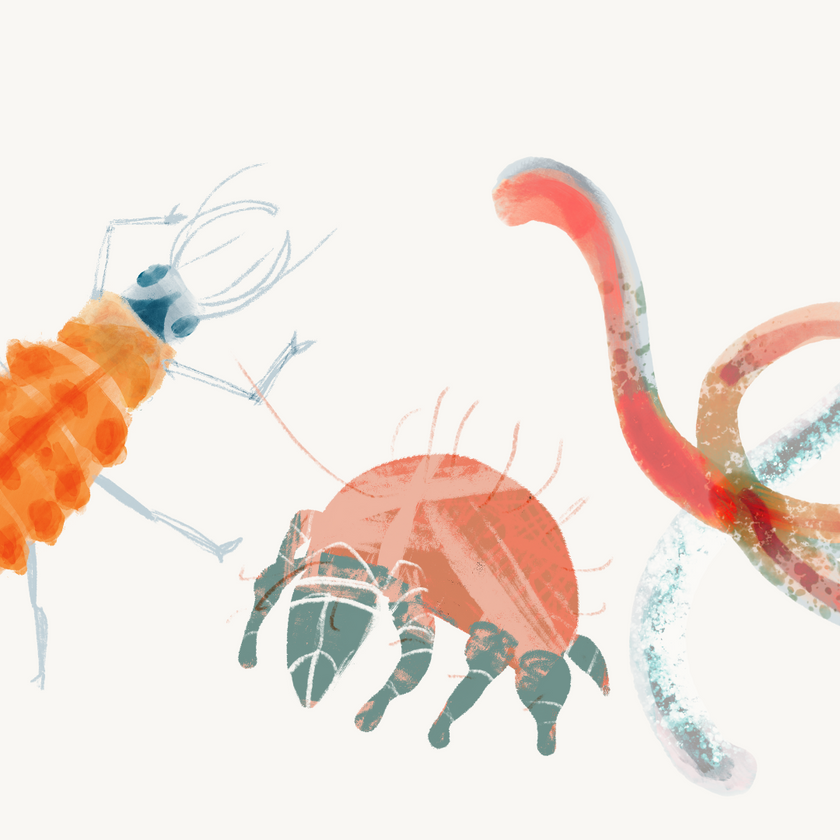A cold color will not easily suffer from spider mites in its plants. Spider mites are active in warm and dry weather. In these conditions, reproduction starts faster, which is beneficial for spider mites but harmful to our plants. Fortunately, with the following tips it is possible to combat spider mites naturally!

If you encounter spots, turning the leaves is the next step in the search for spider mites. Do you see small, fast-moving balls crawling around? Then you know you are dealing with spider mites!

To be 100% sure, you can use a loupe and pay attention to the following characteristics:
• They have a round body and 8 (!) legs.
• Different colors from brown to red or even green.
• Not larger than 0.5 mm in size.
We have now determined that you have discovered spider mites at an early stage. The use of Nicus predatory mites is recommended to eliminate light infestation and to provide preventive protection to the plants.

Spider mites thrive in warm and dry conditions, while predatory mites have a better effect in a slightly more humid environment. You can increase the humidity by regularly misting the plants with a plant sprayer and using a humidifier. Be careful not to constantly wet the plants to prevent mold growth.
How do you recognize spider mites?
Spider mites are a pest that is mainly found in houseplants, the greenhouse or garden. The first traces of spider mites can be recognized by yellow spots on the leaves. Spider mites puncture the plant cells and suck them out, causing yellow spots.
If you encounter spots, turning the leaves is the next step in the search for spider mites. Do you see small, fast-moving balls crawling around? Then you know you are dealing with spider mites!

To be 100% sure, you can use a loupe and pay attention to the following characteristics:
• They have a round body and 8 (!) legs.
• Different colors from brown to red or even green.
• Not larger than 0.5 mm in size.
We have now determined that you have discovered spider mites at an early stage. The use of Nicus predatory mites is recommended to eliminate light infestation and to provide preventive protection to the plants.
Help! I have webs on my plant!
As spider mites continue to reproduce, they create silk, small webs, in the leaves. This makes the plant look less attractive and the spider mite infestation becomes stronger. The webs are used to walk from leaf to leaf and to safely store their eggs.
The Nicus predatory mites, which we discussed earlier, cannot get through the webs. At this time it is advisable to introduce Persi predatory mites . They do have the power to get through the webs.
How do I ensure that the spider mites do not return?
For a pest-free plant, it is advisable to install Nicus predatory mites for further preventive protection. The predatory mites can also be used together, such as in this Combi Deal against spider mites .Spider mites thrive in warm and dry conditions, while predatory mites have a better effect in a slightly more humid environment. You can increase the humidity by regularly misting the plants with a plant sprayer and using a humidifier. Be careful not to constantly wet the plants to prevent mold growth.

















































